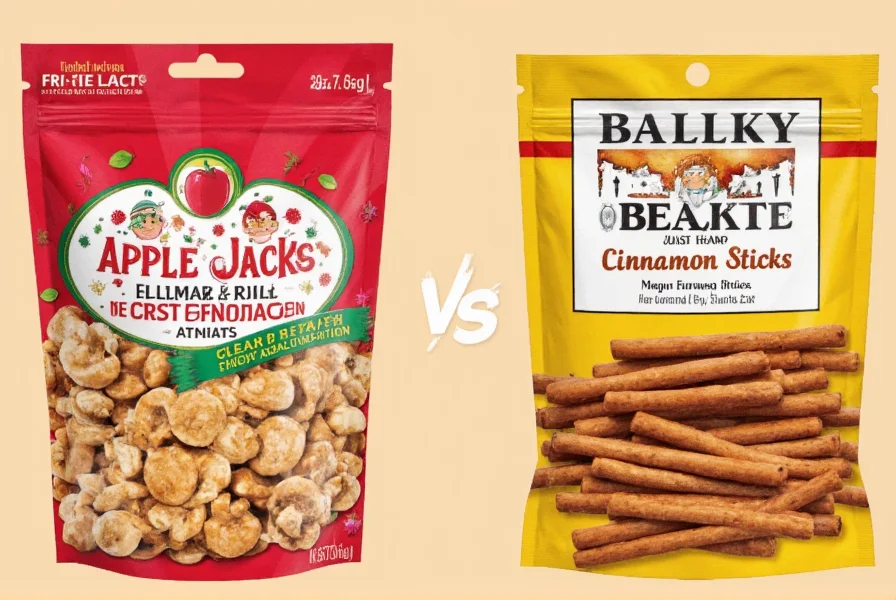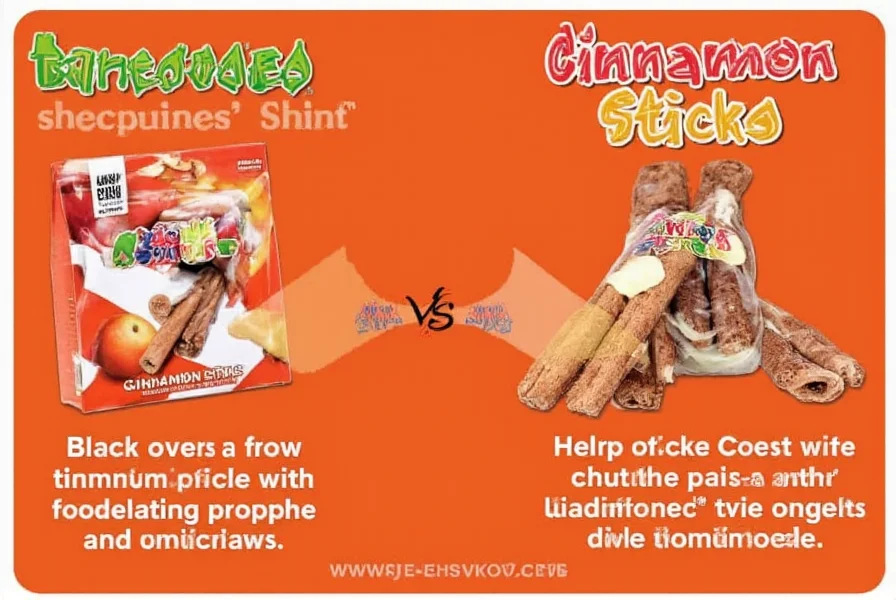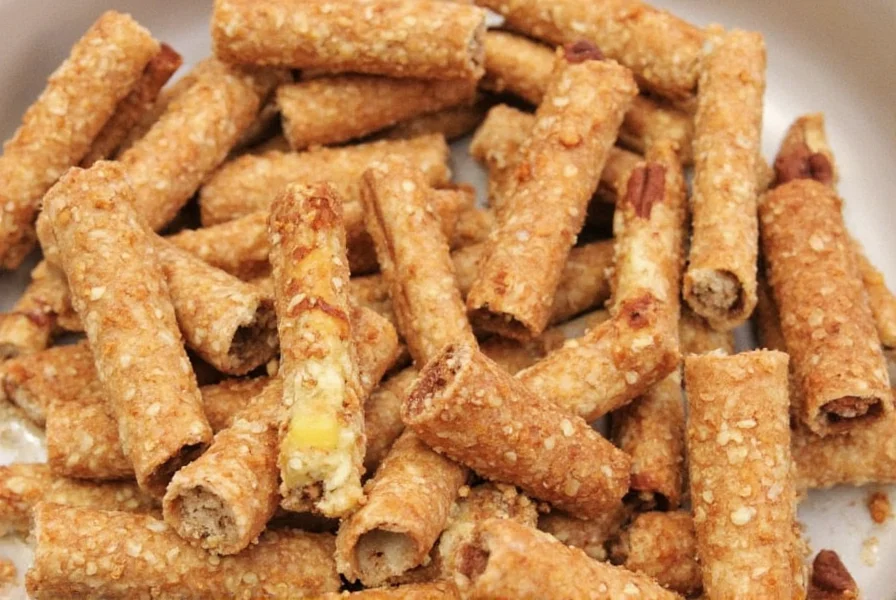Many consumers wonder about the ingredients in their favorite breakfast cereals, particularly when it comes to flavored varieties like Cinnamon Apple Jacks. Understanding what's actually in your cereal box can help clarify common misconceptions about how food manufacturers create distinctive flavors while maintaining product consistency.
Understanding Apple Jacks Ingredients
Cinnamon Apple Jacks, produced by Kellogg's, delivers a sweet cinnamon flavor that many enjoy as part of their morning routine. However, the "cinnamon" in this popular cereal comes from flavoring compounds rather than actual cinnamon sticks. The ingredient list typically includes:
- Whole grain corn
- Sugar
- Corn flour
- Modified food starch
- Salt
- Malt flavor
- Cinnamon and other natural flavors
- Vitamins and minerals
The specific cinnamon flavoring used is a carefully formulated blend that provides consistent taste throughout production batches. Food scientists create these flavor profiles using a combination of natural and artificial flavor compounds that mimic the taste of cinnamon without requiring the actual spice in stick form.
Cinnamon Flavoring vs. Whole Cinnamon Sticks
Understanding the difference between cinnamon flavoring and actual cinnamon sticks is essential when examining cereal ingredients. The following table illustrates key distinctions:
| Characteristic | Cinnamon Flavoring (in cereals) | Whole Cinnamon Sticks |
|---|---|---|
| Physical Form | Liquid or powder extract | Hard, woody bark rolls |
| Usage in Food Production | Consistent flavor distribution | Requires grinding or steeping |
| Shelf Life | Longer stability in processed foods | Loses potency over time |
| Cost Efficiency | More economical for mass production | More expensive per serving |
Food manufacturers like Kellogg's opt for cinnamon flavoring in cereals for practical reasons. Actual cinnamon sticks would be difficult to incorporate into cereal production lines, would create inconsistent flavor distribution, and could pose choking hazards, particularly for children.

How Cereal Manufacturers Create Flavored Products
The process of creating consistently flavored cereals involves several precise steps. For cinnamon-flavored cereals like Apple Jacks:
- Base cereal pieces are formed from grain mixtures
- During the toasting process, flavor compounds are applied
- Additional sugar coatings with flavorings are added
- Quality control ensures consistent flavor profile across batches
This manufacturing approach allows for uniform flavor distribution that would be impossible with whole cinnamon sticks. The fine powder or liquid flavoring adheres evenly to each cereal piece, ensuring every bite delivers the expected taste experience.
Actual Cinnamon Products for Culinary Use
If you're interested in using real cinnamon sticks for cooking or beverages, they're readily available in most grocery stores. Whole cinnamon sticks (also called quills) offer several advantages over ground cinnamon:
- Longer shelf life (up to 4 years when stored properly)
- Milder, more complex flavor profile
- Ideal for infusing flavors into liquids
- Can be reused multiple times
Common culinary applications for cinnamon sticks include:
- Simmering in apple cider or hot chocolate
- Infusing rice pudding or oatmeal
- Adding to mulled wine or spiced tea
- Stirring into coffee as a natural sweetener alternative

Cinnamon-Flavored Cereals Explained
Several popular breakfast cereals feature cinnamon as a primary flavor, each using similar flavoring techniques:
- Cinnamon Toast Crunch - Uses cinnamon and sugar coating on wheat squares
- Cinnamon Grahams - Graham cracker-shaped pieces with cinnamon flavoring
- Cinnamon Apple Jacks - Bell-shaped corn pieces with cinnamon flavor
- Cinnamon Life - Oat-based cereal with cinnamon flavoring
None of these cereals contain actual cinnamon sticks. Instead, they use carefully calibrated flavor compounds to deliver the familiar cinnamon taste consumers expect. This approach ensures product consistency, extends shelf life, and maintains food safety standards.
Creative Uses for Cinnamon Sticks Beyond Cereal
While cinnamon sticks don't belong in your cereal bowl, they offer numerous applications in cooking and home environments:
- Homemade potpourri - Combine with dried citrus and cloves for natural home fragrance
- Cocktail garnishes - Stir cocktails like Old Fashioneds instead of traditional mixers
- Infused syrups - Create cinnamon simple syrup for coffee or desserts
- DIY air fresheners - Simmer in water with citrus peels for natural home scenting
These applications showcase the versatility of whole cinnamon sticks while highlighting why they serve different purposes than the cinnamon flavoring used in processed foods like Apple Jacks.
Conclusion
The question about cinnamon sticks in Apple Jacks stems from a common misunderstanding about how flavored cereals are made. Food manufacturers use scientifically developed flavor compounds to deliver consistent taste experiences without incorporating whole spices. Understanding this distinction helps consumers make informed choices about their food while appreciating the food science behind everyday products. Whether you prefer your cinnamon in stick form for cooking or as a flavoring in your morning cereal, knowing what you're actually consuming contributes to a more informed approach to your dietary choices.
Frequently Asked Questions
Does Cinnamon Apple Jacks contain real cinnamon?
Cinnamon Apple Jacks contains cinnamon flavoring rather than actual cinnamon sticks or significant amounts of ground cinnamon. The flavor comes from a blend of natural and artificial flavor compounds designed to mimic cinnamon taste.
Why don't cereal manufacturers use real cinnamon sticks in flavored cereals?
Cereal manufacturers avoid using actual cinnamon sticks because they would create inconsistent flavor distribution, pose potential choking hazards, be difficult to incorporate into automated production lines, and significantly increase production costs compared to using standardized flavor compounds.
How can I tell if a food product contains real cinnamon versus artificial flavoring?
Check the ingredient list: products with real cinnamon will list "cinnamon," "ground cinnamon," or "cassia" as ingredients. Products using flavoring will typically say "cinnamon flavor," "natural flavors," or "artificial flavors." Whole cinnamon sticks in a product would be visually apparent in the food itself.
What's the difference between cinnamon flavoring and actual cinnamon?
Cinnamon flavoring is a concentrated extract or synthetic compound designed to mimic cinnamon taste, while actual cinnamon comes from the bark of cinnamon trees. Flavoring provides consistent taste in processed foods, whereas real cinnamon offers more complex flavor compounds and potential health benefits associated with the whole spice.











 浙公网安备
33010002000092号
浙公网安备
33010002000092号 浙B2-20120091-4
浙B2-20120091-4